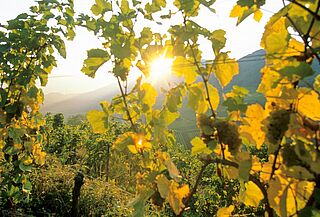Kirchenstueck
Kendte vinmarker
Zum Wohl. Die Pfalz. Cheers! The Pfalz.
Sensuous Wines of Quintessential Elegance: Forster Kirchenstück. Springtime comes early to the Pfalz. In fact, one of Germanys earliest wine festivals is celebrated here, in the Neustadt suburb of Gimmeldingen, when the almond trees blossom in mid- to late April. Just a bit further north on the Deutsche Weinstrasse (German Wine Road) lies a quartet of wine villages whose wine-growers and their
This month, we’re turning our attention to the smallest of the four villages, Forst (population: 863), which boasts no fewer than five “grand cru” sites as follows:
- Ungeheuer: 29.15 ha/72 acres
- Pechstein: 15.31 ha/38 acres
- Jesuitengarten: 6.96 ha/17 acres
- Kirchenstück: 3.67 ha/9 acres
- Freundstück: 3.53 ha/nearly 8 acres
In all, these five sites comprise some 60 ha/145 acres. The high value of these sites was documented by the royal Bavarian property tax assessment of 1828. The late wine writer Frank Schoonmaker (1905–1976), author of one of the 20th-century classic works on German wine,The Wines of Germany (NY, 1956), wrote: “Here is some of the most valuable agricultural land in the world, the Kirchenstück and the Jesuitengaten in Forst.” His overall appraisal of German wine is no less flattering: “bottled poetry.”
While all five vineyards are outstanding, the Kirchenstück is generally acknowledged to be tops. The rich soils are a mixture of sandy clay and loam with fragments of limestone and basalt. Its nine acres of Riesling vines are situated on gentle slopes adjacent to the town, just behind the Kirche (church), with a microclimate enhanced by the surrounding sandstone walls that absorb the warmth of the sun during the day and gently release it at night. Warm evening breezes not only warm the air, but also ensure good circulation to reduce humidity, and thus the danger of mold. The wines are universally described as being extremely rich in fruit aromas and flavors as well as quintessentially elegant and sensuous. Great aging potential.
Today’s village of Forst (meaning “forest”) was ceded in a deed of gift in 1100 by Johann I., bishop of Speyer (shpeye´air) and a nephew of Emperor Heinrich IV, to a foundation in Speyer. The immense Forst (forest) north of Deidesheim, however, was expressly reserved for royal hunting. The village proper lines one main, cobblestone street (0.75 mile on the Deutsche Weinstrasse) that is easy to miss, since a bypass road to the east was constructed to alleviate traffic congestion through the little town. It pays to take the original road to see the picturesque, ivy- and grapevine-cloaked, half-timber and sandstone houses (18th-19th century). Food and wine await within many an oleander-filled courtyard along this tiny stretch of the wine road.
Speyer, by the way, is the site of a UNESCO World Heritage site: the Dom (cathedral), one of the trio of great Rhenish Romanesque cathedrals lining the Rhine in Mainz, Worms and Speyer.
Tips fo Tourists
As of May 1: only 38 days until the world cup soccer games in Germany begin (www.fifaworldcup.yahoo.com), during which German wine will be served at VIP hospitality lounges and other events. The Pfalz wine-growing region is gearing up for the month-long games...Forst on the Weinstrasse, for example, lies between the stadiums in Kaiserslautern and Frankfurt. Soccer fans can enjoy wine-growers’ hospitality as well as great food and wine all along the Deutsche Weinstrasse.
The “Three B’s of the Pfalz” offer the following:
- each estate has a Vinothek (wine shop)
- Ketschauerhof, gourmet restaurant of Weingut Bassermann-Jordan (as of July 2006) in Deidesheim. (Also: 5-star hotel under construction...due to open in late 2006/early 2007.)
- Die Kanne, gourmet restaurant of Weingut Bürklin-Wolf in Deidesheim.
- Le jardin d’hiver, gourmet restaurant of Weingut Reichsrat von Buhl in Deidesheim. (Also: 4-star Hatterer’s Hotel – same address.)
- Additional address in Deidesheim:
- Schwarzer Hahn and Weinstube St. Urban, gourmet restaurants in Deidesheim. (Also: 5-star Hotel Deidesheimer Hof – same address.)
Additional recommendations with excellent food and wine/nice accommodations:
- Neuleiningen (unique, hilltop village ringed by an ancient town wall): Alte Pfarrey (gourmet restaurant and country inn with 9 rooms)
- Kallstadt: Weinkastell zum Weissen Ross (gourmet restaurant with wines from Weingut Koehler-Ruprecht and country inn with 14 rooms)
- Freinsheim (another town ringed by its medieval wall): Luther (gourmet restaurant [* Michelin] and country inn with 23 rooms); Alt Freinsheim (excellent regional fare in a charming, half-timber house), Freinsheimer Hof and Von-Busch-Hof are also recommended for fresh, seasonal/regional specialties.
- Last but not least: The German Wine Academy (guided English-language, week-long tour of wine country in mid-September) takes in three UNESCO World Heritage sites, including the cathedral in Speyer/Pfalz, as well as the Residenz in Würzburg/Franken and the Upper Middle Rhine Valley/Mittelrhein (spectacular landscape between Bingen/Rüdesheim and Koblenz, replete with vine-clad, steep slate vineyard sites and ancient castles). Perfect for singles and/or couples who want to become acquainted with fine German Riesling wines (plus some great reds...Spätburgunder/Pinot Noir and Dornfelder). It’s a fun week with wine lovers from around the world.
- Red wine fans: mid-October GWA....tour red-wine country in Württemberg, Baden, and the southern Pfalz.)
Many thanks to Weingut Reichsrat von Buhl, Deidesheim/Pfalzl for supplying the photo

